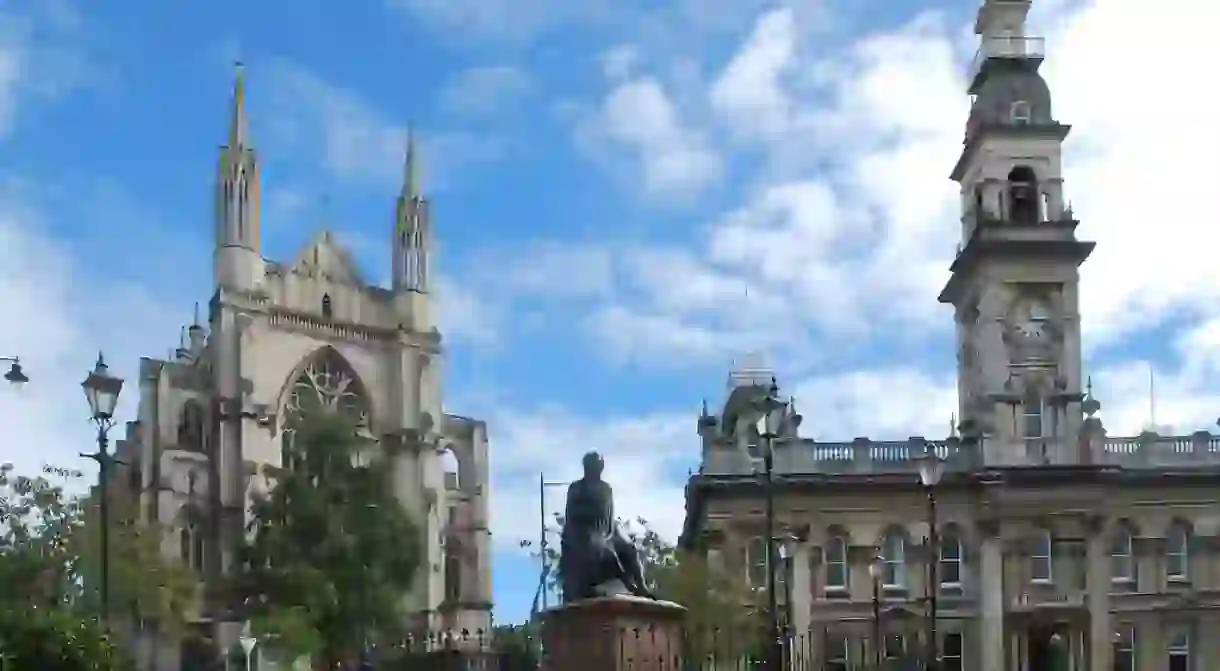The Scottish History of Dunedin, New Zealand

The New Zealand city of Dunedin has an enduring Scottish connection. Its name comes from the Gaelic word for Edinburgh, and Thomas Burns, nephew to famous Scots poet Robert Burns, was among the early settlers. Today, the architecture, shops and street signs pay homage to the area’s history. Here’s a brief look at this deeply ingrained heritage and how it is woven into the present.
Early Settlement
Dunedin was founded in 1848 by the Lay Association of the Free Church of Scotland. The first choice for the name was “New Edinburgh,” which was almost set in stone, until writer and publisher William Chambers argued that the prefix “new” was already overused in North American provinces. Chambers suggested that instead the township should be christened Dunedin, a more poetic ode Edinburgh, in his view. By 1846, the name Dunedin was made official.
From there, Dunedin’s Scottish connection continued to thrive. The city’s surveyor, Charles Kettle, wanted to transform the area into “the Edinburgh of the South,” a nickname still used today. He placed the Octagon (Dunedin’s town square) at the heart of the city, with Moray Place shaping the outer part of its thoroughfares. The town’s axis, George and Princes Streets, were named after the two main streets in Edinburgh. A strip of natural bush and parkland known as the Town Belt separated the city from the hilly suburbs, including Baldwin Street (the world’s steepest), which was mostly disregarded in Kettle’s plans.

A gold rush in the 1860s transformed Dunedin into New Zealand’s most prosperous city, which enabled investment in infrastructure, focusing on education, religion and public works. The Otago Boys’ High School was established in 1863; followed by New Zealand’s oldest university, the University of Otago, in 1869; and then Otago Girls’ High School in 1871. Other substantial buildings constructed at this time include the the First Presbyterian Church of Otago (1873), Knox Church (1876), the Otago Museum (1877), and the Dunedin Public Art Gallery (1884).
Although it’s true that not all settlers were enthused about religion, the Free Church of Scotland played a crucial role in shaping Dunedin’s Scottish identity. Rev Thomas Burns was Dunedin’s first appointed minister and is widely regarded as the most influential religious leader in the Otago province at the time. Burns was involved in naming the Otago region (a corruption of the Maori name “Otakou”), and supported continued Scottish inspiration in naming cities, such as Mosigel, Musselburgh and Bannockburn.

A Prevailing Scottish Identity
Throughout the centuries, Dunedin’s Scottish traits have remained intact. Notable 19th Century visitors, such as Scottish singer David Kennedy, American author Mark Twain, French political scientist Andre Siegfried, and Irish land radical Michael Davitt, are said to have been amazed by the city’s distinctive character. In the 1980s, Vilma Nelson designed and wore the Dunedin Tartan, which serves as a key example of this continued connection and celebrates the voyage and settlement of the city’s Free Church founders. To avoid confusion with its sister city in Florida, USA, it was officially registered as the Dunedin District of New Zealand Tartan.
Dunedin also has its own Haggis ceremony—Otago lamb, a dash of quality oatmeal and some golden Usque Basque, which creates a distinct local flavour. Leckies Butchery in South Dunedin are quite renowned for their haggis, even having a couple of goes at breaking the world record for the biggest.

Along the main streets, there are traditional tartan shops, bars that proudly present their own selection of malts and whiskeys, and a statue of Rev Burns’ famous uncle. Golf courses, pipe bands and the Highlanders rugby team are just a few of the many examples of the loud-and-proud Scottish identity on show. Every year, Dunedin also celebrates Otago Anniversary Day, a commemoration of all things related to the area’s rich history.














